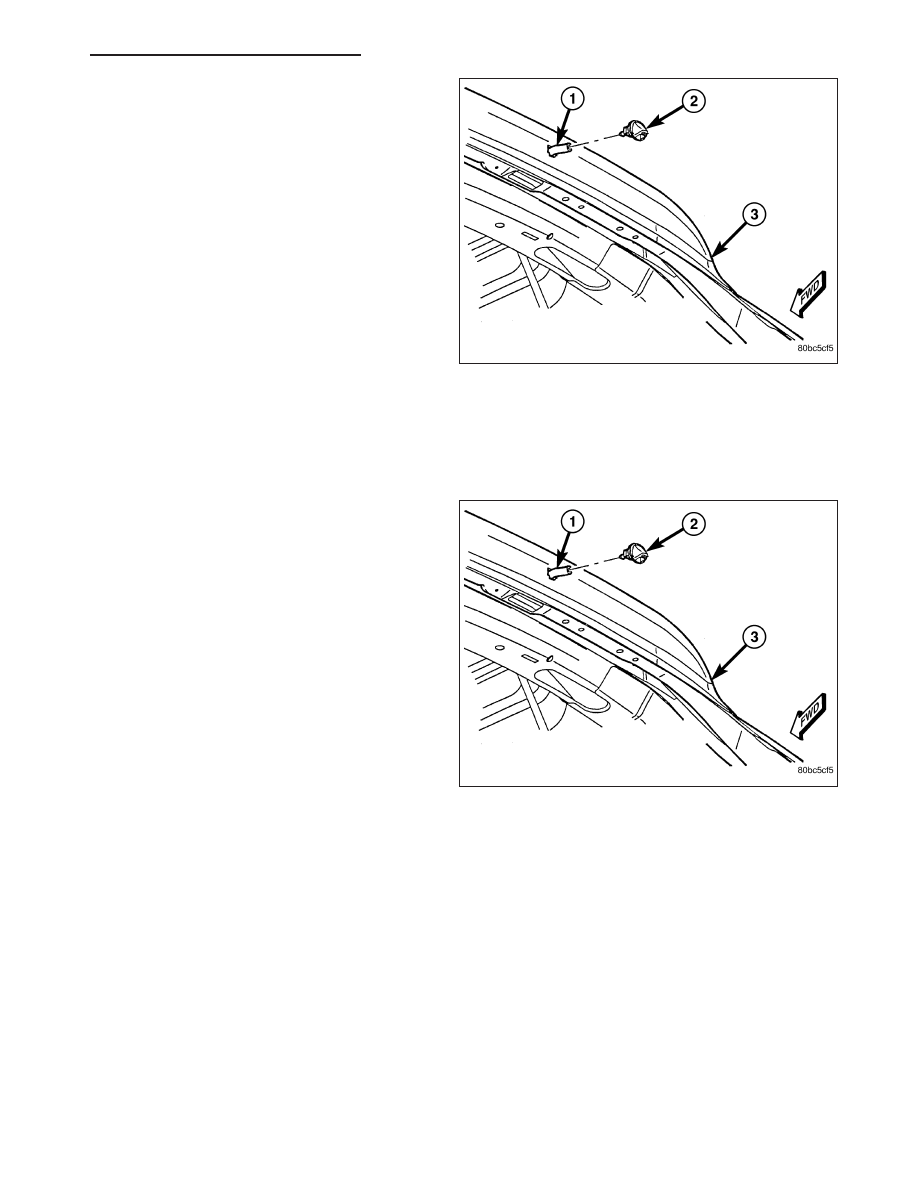Dodge Durango (HB). Manual - part 616

1. Using a trim stick or another suitable wide flat-
bladed tool, gently pry at the bottom of the rear
washer nozzle (2) to release the latch feature that
secures it in the mounting hole of the liftgate outer
panel (3).
2. Pull the rear washer nozzle out from the liftgate
outer panel far enough to access the washer hose
(1).
3. Disconnect the hose from the barbed nipple on the
back of the nozzle.
4. Discard the nozzle.
INSTALLATION
NOTE: The rear washer nozzle latch feature is a one time component, and will be damaged if the nozzle is
removed from its mounting hole for service. If removed from its mounting hole for any reason, the rear
washer nozzle must be replaced with a new unit.
1. Position the new rear washer nozzle (2) to the
mounting hole in the liftgate outer panel (3). Be
certain that the rubber gasket is in position on the
back of the nozzle.
2. Reconnect the washer hose (1) to the barbed nip-
ple on the back of the nozzle.
3. Push the hose and nozzle nipple into the mounting
hole in the liftgate outer panel and engage the tab
located above the nipple with the upper edge of the
hole.
4. Using hand pressure, push firmly and evenly on
the lower edge of the nozzle until it snaps into
place.
HB
REAR WIPERS/WASHERS - SERVICE INFORMATION
8R - 87